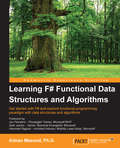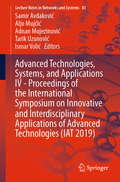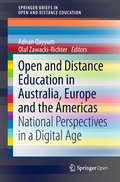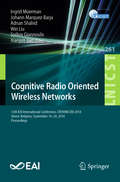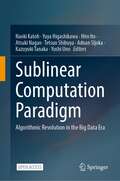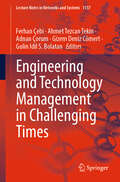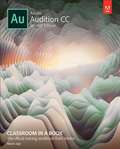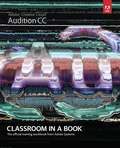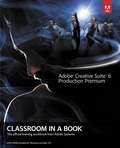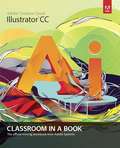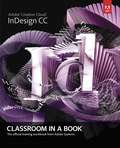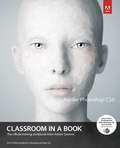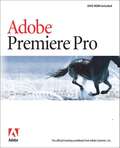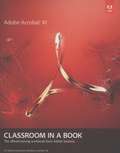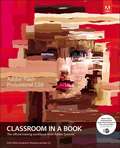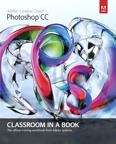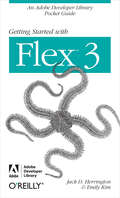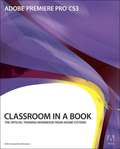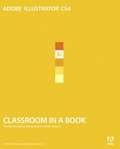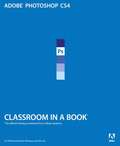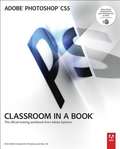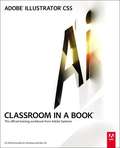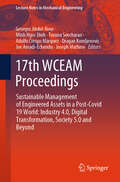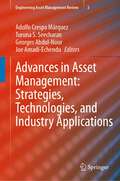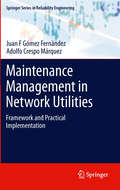- Table View
- List View
Learning F# Functional Data Structures and Algorithms
by Adnan MasoodIf you have just started your adventure with F#, then this book will help you take the right steps to become a successful F# coder. An intermediate knowledge of imperative programming concepts, and a basic understanding of the algorithms and data structures in .NET environments using the C# language and BCL (Base Class Library), would be helpful.
Advanced Technologies, Systems, and Applications IV -Proceedings of the International Symposium on Innovative and Interdisciplinary Applications of Advanced Technologies (Lecture Notes in Networks and Systems #83)
by Ismar Volić Samir Avdaković Aljo Mujčić Adnan Mujezinović Tarik UzunovićThis book presents the scientific outcomes of the conference 11th Days of Bosnian-Herzegovinian American Academy of Arts and Sciences, held in Sarajevo, Bosnia and Herzegovina, June 20–23, 2019. Including innovative applications of advanced technologies, it offers a uniquely comprehensive, multidisciplinary and interdisciplinary overview of the latest developments in a broad range of technologies and methodologies, viewed through the prism of computing, networking, information technology, robotics, complex systems, communications, energy, mechanical engineering, economics and medicine, among others.
Open and Distance Education in Australia, Europe and the Americas: National Perspectives in a Digital Age (SpringerBriefs in Education)
by Olaf Zawacki-Richter Adnan QayyumThis book is open access under a CC BY 4.0 license.This book describes the history, structure and institutions of open and distance education in six countries: Australia, Brazil, Canada, Germany, the UK and the US. It discusses how open and distance education is evolving in a digital age to reflect the needs and circumstances of national higher education systems in these countries, and explores the similarities and differences between the ways in which they are organized and structured. It is the first book to make such comparisons and draw conclusions about the nature of open and distance education in the context of various national higher education systems. In a digital era with growing use of online education as well as open and distance education, this book is particularly useful for policy-makers and senior administrators who want to learn about organizing and expanding open and distance education provision. It is also a valuable reference for researchers, academics and students interested in understanding the different approaches to open and distance education.
Cognitive Radio Oriented Wireless Networks: 13th Eai International Conference, Crowncom 2018, Ghent, Belgium, September 18-20, 2019, Proceedings (Lecture Notes of the Institute for Computer Sciences, Social Informatics and Telecommunications Engineering #261)
by Wei Liu Johann Marquez-Barja Ingrid Moerman Adnan Shahid Spilios Giannoulis Xianjun JiaoThis book constitutes the refereed proceedings of the 13th EAI International Conference on Cognitive Radio Oriented Wireless Networks, CROWNCOM 2018, held in Ghent, Belgium, in September 2018. The 20 revised full papers were selected from 26 submissions. The papers are organized thematically in tracks: Experimental, Licensed Shared Access and Dynamic Spectrum Access, and PHX and Sensing.
Sublinear Computation Paradigm: Algorithmic Revolution in the Big Data Era
by Hiro Ito Yushi Uno Naoki Katoh Yuya Higashikawa Atsuki Nagao Tetsuo Shibuya Adnan Sljoka Kazuyuki TanakaThis open access book gives an overview of cutting-edge work on a new paradigm called the “sublinear computation paradigm,” which was proposed in the large multiyear academic research project “Foundations of Innovative Algorithms for Big Data.” That project ran from October 2014 to March 2020, in Japan. To handle the unprecedented explosion of big data sets in research, industry, and other areas of society, there is an urgent need to develop novel methods and approaches for big data analysis. To meet this need, innovative changes in algorithm theory for big data are being pursued. For example, polynomial-time algorithms have thus far been regarded as “fast,” but if a quadratic-time algorithm is applied to a petabyte-scale or larger big data set, problems are encountered in terms of computational resources or running time. To deal with this critical computational and algorithmic bottleneck, linear, sublinear, and constant time algorithms are required.The sublinear computation paradigm is proposed here in order to support innovation in the big data era. A foundation of innovative algorithms has been created by developing computational procedures, data structures, and modelling techniques for big data. The project is organized into three teams that focus on sublinear algorithms, sublinear data structures, and sublinear modelling. The work has provided high-level academic research results of strong computational and algorithmic interest, which are presented in this book.The book consists of five parts: Part I, which consists of a single chapter on the concept of the sublinear computation paradigm; Parts II, III, and IV review results on sublinear algorithms, sublinear data structures, and sublinear modelling, respectively; Part V presents application results. The information presented here will inspire the researchers who work in the field of modern algorithms.
Engineering and Technology Management in Challenging Times (Lecture Notes in Networks and Systems #1137)
by Ferhan Çebi Ahmet Tezcan Tekin Adnan Çorum Gizem Deniz Cömert Gulin Idil S. BolatanThe book is an important resource to effectively combat these challenges and guide businesses and institutions toward success. Today's world is experiencing a period in which, on the one hand, technical advances, innovations, and changes are developing at an increasingly rapid pace, and on the other hand, uncertain global challenges are emerging. Managers in the field of engineering and technology must skillfully manage this complexity and uncertainty. Reasons to Consider Reading This Book: · Acquiring advanced methodologies and tools to efficiently oversee engineering and technology projects, especially in highly volatile circumstances. · Gaining valuable insights from industry experts and experienced professionals as they impart their knowledge, expertise, and groundbreaking ideas. · Experiencing practical approaches for learning effective strategies and tangible techniques to improve productivity, maximize resources, and promote creativity. The book helps · Engineers and technologists to be able to find solutions to the problems they encounter with the most up-to-date methods. · Business leaders to be able to have a deep understanding of how to effectively leverage technology to achieve strategic advantage and ensure the resilience of their companies · Students and educators to be able to acquire new knowledge by combining academic knowledge with practical application This book serves as a comprehensive guide that provides a clear path to adaptability, creativity, and achievement in an uncertain global landscape. The book emphasizes “Do not merely endure the difficulties and solve them; improve, shape, and take charge with assurance”.
Adobe Audition Cc Classroom In A Book (Classroom In A Book)
by Maxim Jago Adobe Creative Adobe Creative TeamAdobe Audition CC Classroom in a Book contains 17 lessons that cover the basics and beyond, providing countless tips and techniques to help you become more productive with the program. You can follow the book from start to finish or choose only those lessons that interest you.
Adobe Audition CC
by Adobe Creative TeamThe fastest, easiest, most comprehensive way to learn Adobe Audition CC Classroom in a Book®, the best-selling series of hands-on software training workbooks, offers what no other book or training program does--an official training series from Adobe Systems Incorporated, developed with the support of Adobe product experts. Adobe Audition CC Classroom in a Book contains 15 lessons (and one bonus lesson on www.peachpit.com) that cover the basics, providing countless tips and techniques to help you become more productive with the program. You can follow the book from start to finish or choose only those lessons that interest you. Purchasing this book gives you access to the downloadable lesson files you need to work through the projects in the book, and to electronic book updates covering new features that Adobe releases for Creative Cloud customers. For access, go to www.peachpit.com/redeem and redeem the unique code provided inside this book. "The Classroom in a Book series is by far the best training material on the market. Everything you need to master the software is included: clear explanations of each lesson, step-bystep instructions, and the project files forthe students." Barbara Binder, Adobe Certified Instructor Rocky Mountain Training
Adobe Creative Suite 6 Production Premium: The official training workbook from Adobe Systems (Classroom in a Book Series)
by Adobe Creative TeamThe first book to cover the digital video workflows in Adobe CS6, from the bestselling Classroom in a Book series. Hands-on lessons that use clear step-by-step instructions and screenshots explain the components in Adobe Creative Suite CS6 Production Premium. Covers the entire 'Planning to Playback' workflow for video, including media management, editing, adding effects, working with audio, color correcting, and outputting. Companion DVD includes sample media files for all of the book's projects. Those creative professionals seeking the fastest, easiest, most comprehensive way to learn Adobe Creative Suite CS6 Production Premium choose Adobe Creative Suite CS6 Production Premium Classroom in a Book from the Adobe Creative Team at Adobe Press. (From planning to playback, this book covers it all! With focused attention on the workflow and integration between the components of Production Premium, readers will learn to take their project from concept all the way through the production and post-production pipelines using the all the tools necessary. Chapters cover planning and organizing projects, editing in Premiere Pro, creating motion graphics and visual effects using After Effects, working with audio, color correcting in SpeedGrade (a new product in the suite), finishing and rendering compositions, and authoring for DVDs, Blu-ray Discs, and the Web. Readers will also discover how easy it is to use Adobe Media Encoder and Dynamic Link across the suite for easy-to-manage workflow processes as well.
Adobe Illustrator CC: Classroom in a Book
by Adobe Creative TeamThe fastest, easiest, most comprehensive way to learn Adobe Illustrator CC Classroom in a Book®, the best-selling series of hands-on software training workbooks, offers what no other book or training program does-an official training series from Adobe Systems Incorporated, developed with the support of Adobe product experts. Adobe Illustrator CC Classroom in a Book contains 15 lessons that cover the basics. You can follow the book from start to finish or choose only those lessons that interest you.
Adobe Indesign CC (Classroom in a Book)
by Adobe Creative TeamThe fastest, easiest, most comprehensive way to learn Adobe Illustrator CC --Completely revised edition covers the latest features in Adobe InDesign CC, as includes numerous new tips and sidebars on workflow and best practices. -This guide's 16 project-based lessons teach readers the fundamental concepts and techniques of page layout with InDesign CC. -This book is part of the official training series from Adobe Systems and developed with the support of Adobe product experts. The 16 project-based lessons show students step-by-step the key techniques for working with InDesign CC. Students learn what they need to know to create engaging page layouts, flow and edit text, create and use styles, incorporate graphics and tables, and create PDF forms and ebooks. This completely revised edition covers the new features in Adobe InDesign CC, including the QR code generator and Font Favorites, and it features many redesigned sample documents, numerous new tips and sidebars on workflow and best practices, and more details on high-end typography options such as hyphenation settings. This thorough, self-paced guide is ideal for beginning students wanting to get up to speed on the key features of this program. Those who already have some experience with InDesign can improve their skills and learn InDesign's newest features. New to this InDesign CC edition-students now download the lesson files from the Peachpit website, so they can work along, step-by-step, with the book.
Adobe Photoshop Cs6 (Classroom In A Book)
by Adobe Creative TeamCreative professionals seeking the fastest, easiest, most comprehensive way to learn Adobe Photoshop CS6 choose Adobe Photoshop CS6 Classroom in a Book from the Adobe Creative Team at Adobe Press. The 14 project-based lessons in this book show readers step-by-step the key techniques for working in Photoshop CS6 and how to manipulate images, edit motion-based content, and create image composites. In addition to learning the key elements of the Photoshop interface, this completely revised CS6 edition covers new features, including precise cropping with multiple overlays, expanded content-aware toolkit with skin tone-aware selections and masking, three new blur effects, re-engineered design tools, adaptive Wide Angle adjustments, improved Camera Raw engine, improved auto corrections, Background Save and Auto-recovery, modernized user interface, intuitive video enhancements, simplified 3D interface, improved editing speed with real-time results, and more. In addition to the lesson files, the companion DVD will feature 2 hours of free video tutorials from Adobe Photoshop CS6: Learn by Video by Adobe Press and video2brain, a great added value! "The Classroom in a Book series is by far the best training material on the market. Everything you need to master the software is included: clear explanations of each lesson, step-by-step instructions, and the project files for the students. " --Barbara Binder, Adobe Certified Instructor, Rocky Mountain Training Classroom in a Book®, the best-selling series of hands-on software training workbooks, helps you learn the features of Adobe software quickly and easily. Classroom in a Book offers what no other book or training program does--an official training series from Adobe Systems Incorporated, developed with the support of Adobe product experts. **Breaking News! Adobe has released an update to Photoshop offering new features for Creative Cloud customers including Retina Display Support, Smart Object support for Blur Gallery and Liquify, powerful CSS support for web design, workflow improvements, improved 3D effects and more. Register your book at peachpit. com/register to receive a free update that covers these features.
Adobe Premiere Pro Classroom in a Book
by Adobe Creative TeamMove over Final Cut Pro. There's a new king of the digital video editing hill, and it doesn't even work on a Mac (though it may be enough to lure some Mac loyalists over). Eschewing cross-platform support for a focus on speed, features, and a quickness to market that was impossible to achieve with both Mac and Windows versions, the brand-new Windows XP¿only Adobe Premiere Pro sets a new standard for desktop digital video editing. Here to get you up to speed on it quickly and efficiently is the first and last word on the subject from the folks behind Premiere Pro--the Adobe Creative Team. This project-based volume covers not just the basics of working with audio, creating transitions, and producing titles but also all that's new (and revolutionary) in Premiere Pro: three-point color correction, multiple timelines, a new audio mixer, enhanced media management, and more. Best of all, the accompanying DVD includes real footage that you can practice on!
Adobe Acrobat Xi Classroom In A Book
by Adobe Creative Team StaffAdobe Acrobat XI Classroom in a Book is the most thorough and comprehensive way for creative professionals and business users to learn how to reliably create, edit, and sign PDF documents and forms with Adobe Acrobat XI. Each chapter in this step-by-step, project-based guide contains a project that builds on your growing knowledge of the program, while end-of-chapter review questions reinforce each lesson. This cross-platform (Mac and Windows) book shows you how to collaborate effectively through electronic reviews, easily share your work across multiple platforms and devices, and speed up your production and business task workflow with Acrobat XI. In this new version you'll learn how to use an integrated Acrobat toolbar (for popular Microsoft and browser apps) so you can easily convert files to PDF and then learn how to directly edit text and images in your PDFs. You'll also learn how to build PDF or web forms with the new built-in Adobe FormsCentral desktop app. We'll show you how to speed up your business workflow by gathering feedback and approval via online document reviews. And you'll learn how to create interactive forms and track responses within Acrobat, how to add signatures and security to your PDF files, and much more.
Adobe Flash Professional Cs6 Classroom In A Book
by Adobe Creative Team StaffThose creative professionals seeking the fastest, easiest, most comprehensive way to learn Adobe Flash Professional CS6 choose Adobe Flash Professional CS6 Classroom in a Book from the Adobe Creative Team. The 10 project-based lessons in this book show readers step-by-step the key techniques for working in Flash CS6. Readers learn what they need to know to create engaging interactive content with Flash CS6. In addition to learning the key elements of the Flash interface, including panels, timelines, and frames, readers learn how to work with graphics, create and edit symbols, modify text, add interactivity with ActionScript, and incorporate animation and sound into their projects. They also learn how to prepare and export their finished projects for publishing. This completely revised CS6 edition shows readers how to generate sprite sheets for enhanced game development workflow and deliver apps with a prepackaged Adobe AIR captive runtime for better user experience. The book also covers the new, powerful, and intuitive tools and integrated support for reaching audiences across devices that run on Android and iOS platforms by targeting the Adobe AIR 3. 2 runtime. The companion DVD includes lesson files so readers can work along with the book, as well video training from Learn Adobe Flash Professional CS6 by Video. "The Classroom in a Book series is by far the best training material on the market. Everything you need to master the software is included: clear explanations of each lesson, step-by-step instructions, and the project files for the students. " --Barbara Binder, Adobe Certified Instructor, Rocky Mountain Training Classroom in a Book®, the best-selling series of hands-on software training workbooks, helps you learn the features of Adobe software quickly and easily. Classroom in a Book offers what no other book or training program does--an official training series from Adobe Systems Incorporated, developed with the support of Adobe product experts.
Adobe Photoshop CC: Classroom In A Book
by Adobe Creative Team StaffThe fastest, easiest, most comprehensive way to learn Adobe Photoshop CC Classroom in a Book#65533;, the best-selling series of hands-on software training workbooks, offers what no other book or training program does--an official training series from Adobe Systems Incorporated, developed with the support of Adobe product experts. Adobe Photoshop CC Classroom in a Book contains 14 lessons that cover the basics, providing countless tips and techniques to help you become more productive with the program. You can follow the book from start to finish or choose only those lessons that interest you. Purchasing this book gives you access to the downloadable lesson files you need to work through the projects in the book, and to electronic book updates covering new features that Adobe releases for Creative Cloud customers. For access, goto www. peachpit. com/redeem and redeem the unique code provided inside this book. "The Classroom in a Book series is by far the best training material on the market. Everything you need to master the software is included: clear explanations of each lesson, step-by-step instructions, and the project files for the students. " Barbara Binder, Adobe Certified Instructor Rocky Mountain Training
Getting Started with Flex 3: An Adobe Developer Library Pocket Guide for Developers (Pocket Reference (O'Reilly))
by Jack D. Herrington Emily Kim Adobe Development TeamDiscover how easy RIA development can be with this one-of-a-kind handbook from the Adobe Developer Library. Several clear, step-by-step mini-tutorials teach you about web services, event handling, designing user interfaces with reusable components, and more. After finishing this guide, you'll be able to build Flash applications ranging from widgets to full-featured RIAs using the Flex SDK and Flex Builder 3.0. With Getting Started with Flex 3, you will:Walk through sample RIA projects and see examples of amazing applications people have built with FlexWork with ActionScript 3.0 and the MXML markup languageBuild user interfaces using the controls and tools available with the frameworkGet a tour of controls available commercially and through open sourceLearn how Flex integrates with ASP.NET, ColdFusion, PHP, and J2EE in the serverBuild Flex-based widgets that let you display real-time dataUse advanced controls to build 3D graphs, data dashboards, mapping applications, and moreYou'll find complete code for video players, a slideshow, a chat client, and an RSS reader, just to name a few. You also get plenty of tips, tricks, and techniques to leverage your existing programming skills, whether you come from an open source or Visual Studio-intensive background.
Adobe Premiere Pro CS3
by Adobe PressThe best-selling guide to Adobe's powerful digital video editing application, now fully updated to cover the newest version of Premiere Pro.
Adobe Illustrator CS4: Classroom in a Book
by Adobe SystemsThe fastest, easiest, most comprehensive way to learn Adobe Illustrator CS4 Adobe Illustrator CS4 Classroom in a Book contains 15 lessons. The book covers the basics of learning Illustrator and provides countless tips and techniques to help you become more productive with the program. You can follow the book from start to finish or choose only those lessons that interest you. Learn how to create artwork for illustrations, logos, stationery, page layouts, posters, and integrate with Adobe Flash movies, Adobe In Design layouts, and more! "The Classroom in a Book series is by far the best training material on the market. Everything you need to master the software is included: clear explanations of each lesson, step-by-step instructions, and the project files for the students. " -Barbara Binder, Adobe Certified Instructor, Rocky Mountain Training Classroom in a Book , the best-selling series of hands-on software training workbooks, helps you learn the features of Adobe software quickly and easily. Classroom in a Book offers what no other book or training program does-an official training series from Adobe Systems Incorporated, developed with the support of Adobe product experts.
Adobe Photoshop CS4: Classroom in a Book
by Adobe SystemsThe fastest, easiest, most comprehensive way to learn Adobe Photoshop CS4 Fourteen lessons in Adobe Photoshop CS4 Classroom in a Book cover basic and advanced techniques in Adobe Photoshop, the world's best image-editing software. Learn how to retouch digital photos, work with layers and masks, navigate the workspace, prepare images print, and explore the latest features. Tips, extra-credit exercises, and step-by-step lessons help you become more productive using Photoshop. Learn to correct and enhance digital photos, create image composites, transform images in perspective, and prepare images for print and the web. Combine images for extended depth of field, and try out the new 3D features in Adobe Photoshop CS4 Extended. "The Classroom in a Book series is by far the best training material on the market. Everything you need to master the software is included: clear explanations of each lesson, step-by-step instructions, and the project files for the students. " -Barbara Binder, Adobe Certified Instructor, Rocky Mountain Training Classroom in a Book , the best-selling series of hands-on software training workbooks, helps you learn the features of Adobe software quickly and easily. Classroom in a Book offers what no other book or training program does-an official training series from Adobe Systems Incorporated, developed with the support of Adobe product experts.
Classroom in a Book: The Official Training Workbook
by Adobe SystemsThis official guide to Adobe's popular Photoshop CS5 provides step-by-step instructions for performing common tasks with this ubiquitous image manipulation application. Beginning with an overview of the software and the desktop environment, the volume covers such topics as photo corrections, working with selection tools, layers, enhancing digital photos, masks and channels, typography, vector drawing, advanced compositing, 3D images and the preparation of finished files for printing or the web. The material is well-illustrated with numerous color figures and screen shots and a DVD-Rom containing sample files and video tutorials is included. This is an official publication from Adobe.
Classroom in a Book: The Official Training Workbook
by Adobe SystemsCreative professionals seeking the fastest, easiest, most comprehensive way to learn Adobe Illustrator CS5 choose Adobe Illustrator CS5 Classroom in a Book from the Adobe Creative Team at Adobe Press. The 15 project-based lessons in this book show readers step-by-step the key techniques for working in Illustrator CS5. Readers learn how to create vector artwork for virtually any project and across multiple media: print, websites, interactive projects, and video. In addition to learning the key elements of the Illustrator interface, they'll learn how to integrate their artwork with Adobe Flash movies, Adobe In Design layouts, and Adobe Flash Catalyst software to add interaction to their designs. This completely revised CS5 edition covers new perspective drawing tools, variable-width watercolor strokes, multiple art boards with video-specific presets, the new realistic Bristle brush and Shape Builder tool, and the ability to maintain consistent raster effects across media. "The Classroom in a Book series is by far the best training material on the market. Everything you need to master the software is included: clear explanations of each lesson, step-by-step instructions, and the project files for the students. " -Barbara Binder, Adobe Certified Instructor, Rocky Mountain Training Classroom in a Book , the best-selling series of hands-on software training workbooks, helps you learn the features of Adobe software quickly and easily. Classroom in a Book offers what no other book or training program does-an official training series from Adobe Systems Incorporated, developed with the support of Adobe product experts.
17th WCEAM Proceedings: Sustainable Management of Engineered Assets in a Post-Covid 19 World: Industry 4.0, Digital Transformation, Society 5.0 and Beyond (Lecture Notes in Mechanical Engineering)
by Joseph Mathew Adolfo Crespo Márquez Joe Amadi-Echendu Dragan Komljenovic Turuna Seecharan Georges Abdul-Nour Minh Ngoc Dinh17th WCEAM Proceedings provides a record of some of the intellectual discussions (including keynote addresses, research paper presentations, panel debates and practical workshops) that took place among the attendees and participants of the 17th World Congress on Engineering Asset Management (WCEAM), held from 18 - 20 October 2024 at the Sheraton Saigon Hotel and Towers, Ho Chi Minh City, Vietnam. The events were organized by the International Society for Engineering Asset Management (ISEAM) and hosted by RMIT University Vietnam LLC (RMIT VN), Ho Chi Ming City. The content of the book includes topics listed below under a general theme of Sustainable Management of Engineered Assets in a Post-Covid World: Industry 4.0, Digital Transformation, Society 5.0 and beyond Sustainable asset investment, acquisition, operations, maintenance, and retirement strategies Production-service transformation and product-service systems Sustainable asset acquisition, operations, maintenance, and retirement processes Modeling and simulation of acquisition, operations, maintenance, and retirement processes Reliability and resilience engineering Applications of the Fourth Industrial Revolution (4IR) technologies in EAM, e.g., Digital Twins Cybersecurity issues in asset management Asset condition, risk, resilience, and vulnerability assessments Asset management and decision support systems Applications of international and logical guidelines and standards in EAM Human dimensions and asset management performance Case studies of asset management in various industries and sectors This proceedings is an excellent resource for asset management practitioners, researchers and academics, as well as undergraduate and postgraduate students.
Advances in Asset Management: Strategies, Technologies, and Industry Applications (Engineering Asset Management Review #3)
by Adolfo Crespo Márquez Joe Amadi-Echendu Georges Abdul-Nour Turuna S. SeecharanThis book discusses asset life-cycle management, especially, human dimensions on the management of infrastructure and industry-sector assets. The book explores advances decision support systems based on the applications of Fourth Industrial Revolution (4IR) technologies such as augmented reality (AR) and virtual reality (VR), machine learning, and digital twinning for monitoring, diagnostics, prognostics. It includes methodologies and cases applied to different operational contexts. The book also considers the implications of the applications of international standards, local regulations and industry guidelines to risk and resilience engineering asset operations.
Maintenance Management in Network Utilities
by Adolfo Crespo Márquez Juan F Gómez FernándezIn order to satisfy the needs of their customers, network utilities require specially developed maintenance management capabilities. Maintenance Management information systems are essential to ensure control, gain knowledge and improve-decision making in companies dealing with network infrastructure, such as distribution of gas, water, electricity and telecommunications. Maintenance Management in Network Utilities studies specified characteristics of maintenance management in this sector to offer a practical approach to defining and implementing the best management practices and suitable frameworks. Divided into three major sections, Maintenance Management in Network Utilities defines a series of stages which can be followed to manage maintenance frameworks properly. Different case studies provide detailed descriptions which illustrate the experience in real company situations. An introduction to the concepts is followed by main sections including: * A Literature Review: covering the basic concepts and models needed for framework design, development and implementation. * Framework Design and Definition: developing the basic pillars of network utilities maintenance management framework. * Performance Evaluation & Maturity: focusing on the reliability concept and maturity models from different viewpoints. By establishing basic foundations for creating and maintaining maintenance managements strategies, Maintenance Management in Network Utilities acts a practical handbook for all professionals in these companies and across areas such as network development, operations management and marketing.
